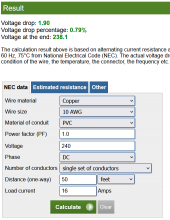forbin
New Member
- Joined
- Jul 4, 2022
- Messages
- 143
There will be 16 panels on my roof. However, the only place where I have space for the rest of the components--48V batteries, all-in-ones, etc--is in a shed about 40 feet away. So the power will go 40' from the roof to the shed, then another 40' back from the shed to the house. Is that a problem for loss, cable size, etc?



